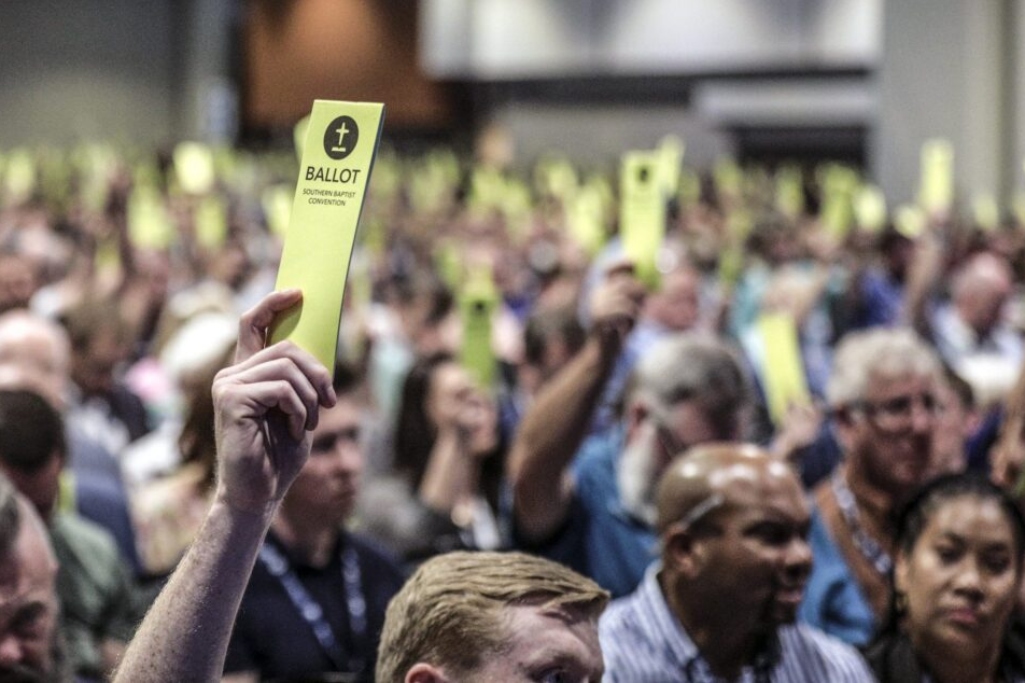Sometimes I am asked how the North American Mission Board (NAMB) is prioritizing its work in North America. There are probably a few different ways we could do that, but I tell people we are letting the numbers draw our map and letting God be our guide.
Here’s what I mean by letting the numbers draw our map. One of the best ways to gauge spiritual need in North America is to look at the ratio of congregations to population in a particular area. Missiologists tell us it is best to have at least one congregation for every 1,000 people in an area. One to 500 would be even better.
With that ratio in mind, Southern Baptists are doing pretty well in some areas. For instance, we have one congregation for every 1,404 people in Mississippi. In Alabama it is one for every 1,451. And in Arkansas, one for every 1,922.
Those numbers are very encouraging. We should celebrate how effective Southern Baptists have been in these states and others in the South. But let’s look elsewhere.
Our congregation-to-population ratios change dramatically when we look toward other regions in North America. In Iowa there is only one congregation for every 30,464 people. In Michigan it is one for every 34,318. In the Pennsylvania-South Jersey state convention it’s one for every 40,132 people. In New York there are 62,362 people for every one SBC congregation.
In the Minnesota-Wisconsin convention, there is only one SBC congregation for every 75,799 people. That means there are 54 times more people per SBC congregation in Minnesota-Wisconsin than there are people per SBC congregation in Mississippi. What a difference a few hundred miles can make!
In Canada, Southern Baptists have only one congregation for every 117,212 people.
These needs are huge and as believers we want to do all we can to give people in all of these areas better access to the gospel.
But still, we need a strategy as we approach such a large task.
With that in mind, NAMB has identified states and provinces in the United States and Canada based on the level of need, which is based on these congregation-to-population ratios.
Red states – those with the highest need – are any with ratios higher than 1-to-20,000.
That includes all of Canada, virtually all of the Northeast and some states in the Midwest and West.
Yellow states are those with between 10,000 and 20,000 people per SBC congregation.
Green states have better than a 1-to-10,000 ratio between people and churches. It won’t surprise you to learn that all of the 13 states in the South region fall into the green category. But you might be surprised by some of the others that show up.
Missouri, West Virginia, Alaska, Montana, Wyoming and New Mexico all fall into the green category.
Does this mean NAMB will ignore the needs in green states?
Absolutely not.
We still want to help make churches there stronger and help our partners start churches in population centers where our ratios are lower. But as we seek to penetrate lostness at its highest levels in North America, we have to look at sheer numbers.
That’s where the red, yellow and green list will help.
As we look at where most of our funding and church planting resources will go, NAMB must look at red states first.
We have to start closing the gap in areas where congregation-to-population ratios are the highest. To impact lostness, we have to give people in those areas better access to the gospel.
Of course, there are other considerations as we chart this course. In some areas, other evangelical churches are proclaiming the gospel effectively.
The presence of these churches cuts congregation-to-population ratios considerably.
And we also must realize that just because a church exists, doesn’t mean it is reaching its community. So these numbers can only serve as a map as we become more familiar with a particular area.
NAMB’s Send North America strategy is informed by these numbers. We are especially concentrating on large cities where Southern Baptist congregation-to-population ratios have slipped the most in recent decades. But God is our ultimate guide.
That’s why we are keeping some of our budget flexible, so when we see God’s activity in a particular state or region, we can move quickly to get more funds and more missionaries to that place.
If we let the numbers make our map and let God be our guide, I believe Southern Baptists will be on a better track for penetrating lostness where it looms largest in North America.
(EDITOR’S NOTE – This article is one of a series Kevin Ezell, president of the North American Mission Board, is writing about NAMB strategy and direction. To read the entire series, visit kevinezell.com. To learn how you or your church can become involved in reaching North America for Christ, visit namb.net and click “Mobilize Me.”)
 |


